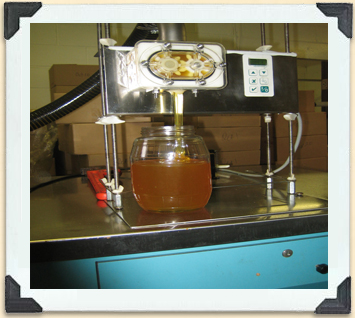The Keeper

Once it's been filled, the lid and label for this large jar of honey will be put on by hand.
© Crerar's Honey Limited
Packaging
Depending on the intended market, honey may be bottled directly into small containers for retail sale or into large drums for storage or export. In an effort to appeal to a wide range of consumers, honey is packaged in containers of many different sizes and styles. These include glass jars, plastic tubs and squeezable jugs.
Like most aspects of honey processing, bottling can involve automation in large operations, or manual labour such as a hand valve on a plastic pail in smaller operations.



















